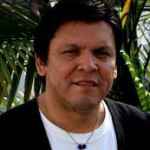The Heiltsuk Integrated Resource Management Department was created in 2010 to ensure a coordinated and collaborative approach to the Nation's stewardship efforts.
Heiltsuk Stewardship: Collaborating for Resource Management
Estimated Reading time

20 Mins
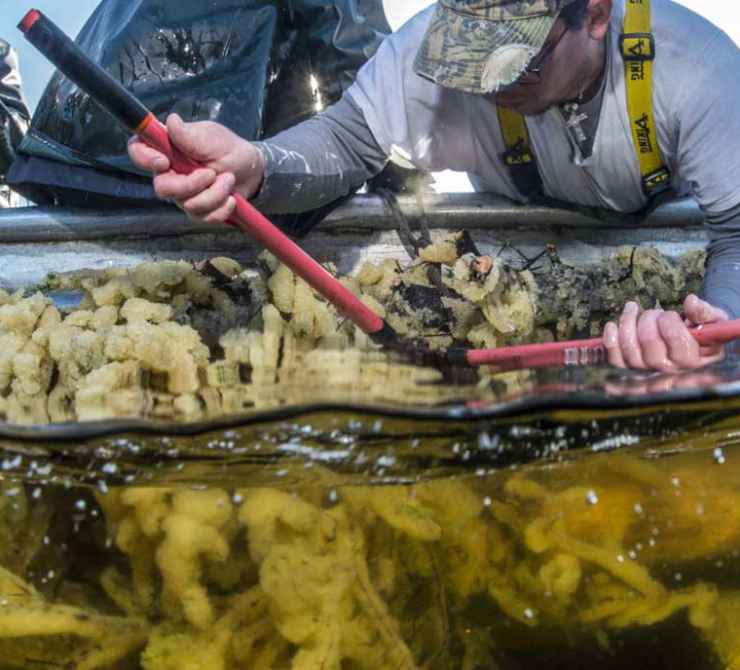
Spiller Channel
Located close to Heiltsuk’s home community of Bella Bella, this channel is an important herring spawning ground. In 2015, the Heiltsuk Nation secured protection for the herring stocks in this system.
At a Glance
The Heiltsuk Integrated Resource Management Department (HIRMD) is the result of collaborative community engagement to ensure the traditional values of the Heiltsuk, Hemas (hereditary leaders), Elders, voices of youth, and all members of the community are supported in protecting their territory.
HIRMD was created in 2010 to support a holistic and coordinated approach to the Heiltsuk Nation’s stewardship activity. The department continues to manage the resources of Heiltsuk territory for the benefit of present and future generations.
Creating Efficiencies and Reinforcing Heiltsuk Values
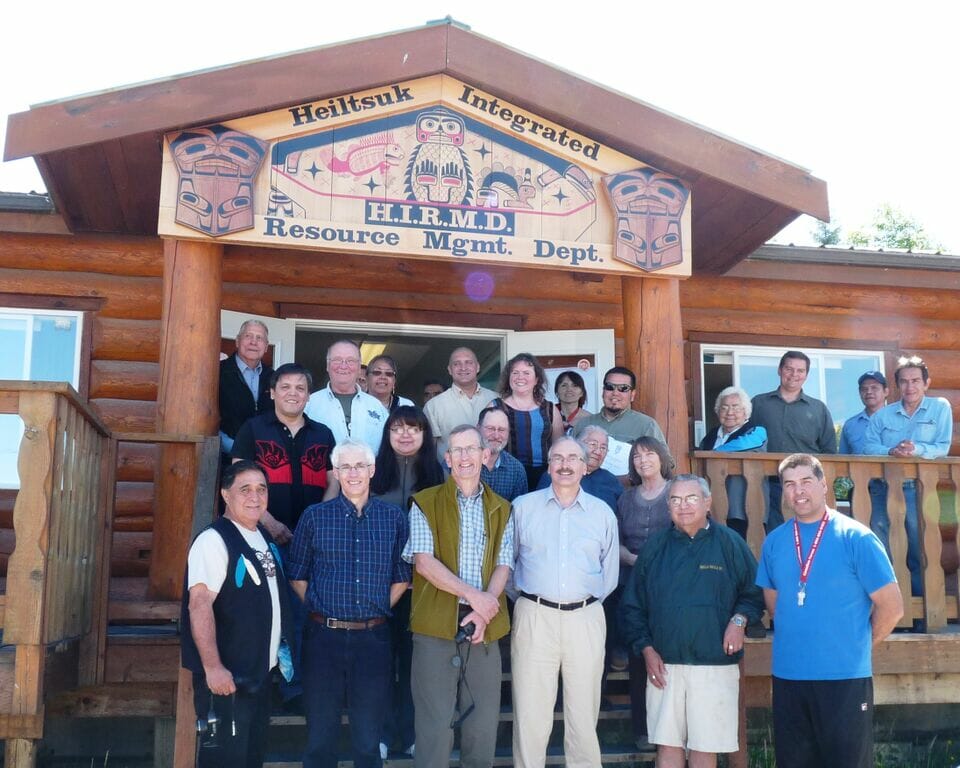
In 2010, the Heiltsuk Nation restructured its stewardship operations to integrate several programs into one department. “Heiltsuk already had a number of departments working on various resource issues, like fisheries, forestry, and cultural heritage management,” explains Chief Councillor Marilyn Slett. “But the departments all tended to work as siloes, with less communication between them than we desired. We decided to look to a more effective way to steward our Nation’s resources by creating a model guided by our hereditary leaders.”
We decided to look to a more effective way to steward our Nation’s resources by creating a model guided by our hereditary leaders.
With this mandate, the Nation invested conservation funding into research and development of a new integrated approach to water, land, and cultural resource stewardship and decision-making throughout Heiltsuk territory.
“We invested funding from Coast Funds to undertake a pilot project, research other models, and interview our Hemas, department managers, and Heiltsuk councillors to get their views on what was important,” says Slett. The result of this initial planning was a new structure for operations that would reflect the stewardship needs of the Nation and create efficiency between departments.
The Heiltsuk Integrated Resource Management Department (HIRMD) was established and brought all of the technical staff together under one roof to increase collaboration and communication in order to effectively support the Heiltsuk Tribal Council in making resource management decisions.

A strong governance system for HIRMD was also developed to ensure a diverse cross section of the community was represented at the board level, including a youth member, hereditary leaders, a tribal councillor, and a community member-at-large. “We really try to make sure we have a good demographic mix of the community on our board,” explains Kelly Brown, HIRMD Stewardship Director. “We think it’s really important to have active representation from all age ranges and perspectives.”
The change in structure and governance enables HIRMD to make well-informed decisions with direction from the board. “With these changes, HIRMD was charged with the responsibility to go ahead with decision making on stewardship matters on behalf of the Nation,” explains Brown. “It was a really important change to streamline decision making so we could be effective and efficient in responding to all stewardship matters in our territory.”
Working Proactively with Industry
One of the improvements to come out of the restructuring process was more effective engagement with industry proponents in Heiltsuk territory. Previously, responding to referrals (industry applications for commercial permits to conduct business within a First Nation’s territory) within the restricted review period overwhelmed the Nation’s stewardship capacity.
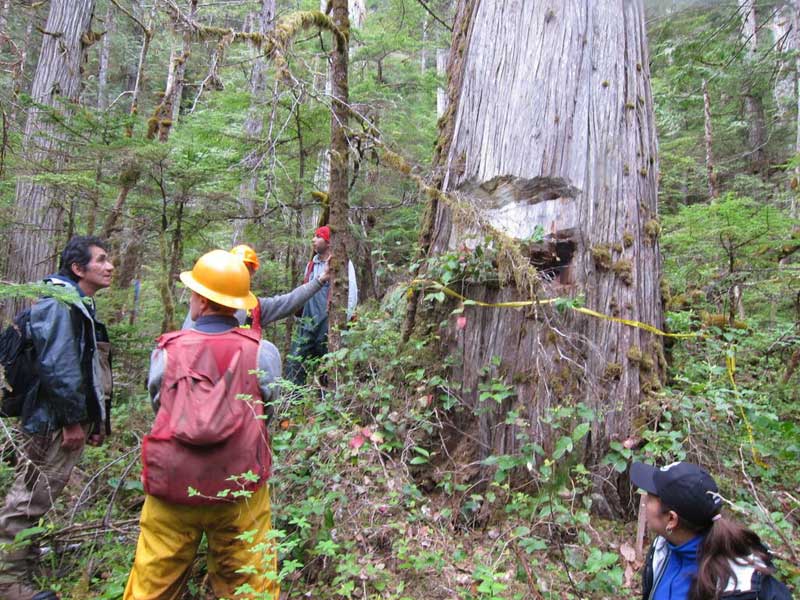
Typically, referrals will come to a Nation after the proponent has already received a permit from the Province, leaving First Nations 30 days to respond with any ecological or cultural concerns with the area of the proposed development, resource extraction, or commercial activity. This process has in many cases left First Nations out of initial consultation process and left them with insufficient time to respond.
“We used to be backed up with hundreds of referrals at a time,” confirms Brown. “We knew that we had to change something, because it just wasn’t an effective or efficient process.” Using the guidelines established in Heiltsuk Strategic Landscape Reserve Design (SLRD) and Reconciliation Protocol Agreement with government, the Heiltsuk looked to develop a more streamlined process that enabled productive partnerships with industry.
“We developed a framework to work directly with industry on their applications for permits,” explains Brown. This arrangement sees HIRMD staff collaborate with industry to develop an application before it goes to the province for a permit and brings more certainty and efficiency to their industry partners. It also enables HIRMD to represent the interests of the Heiltsuk Nation from the start with industry as well as create an efficient process to approve permits that align with the Nation’s values.
This working relationship brings a lot more efficiency for both us and industry. It’s progressed to the point where we have developed memorandum of understanding (MOU) agreements with certain industry partners.
“This working relationship brings a lot more efficiency for both us and industry,” says Brown. “It’s progressed to the point where we have developed memorandum of understanding (MOU) agreements with certain industry partners.” Now, every company that operates in Heiltsuk territory has a signed MOU and has co-developed a plan with the Nation to identify where they can extract specific resources. This process incorporates Heiltsuk values right from start and ensures the Nation’s ability to protect important watersheds, sensitive ecological areas, and cultural assets.
Traditional Values and Community Consultation

Part of the mandate for HIRMD’s stewardship work stems from a Land Use Plan created and approved by the community in 2005. This shaped many of the priorities and goals for the Nation’s conservation efforts and resource management decisions. However, the plan is considered a living document and the Nation seeks to maintain close consultation with the community on their work to adjust and refine as necessary.
“The Land Use Plan was really a mandate to go do this work in the first place,” explains William Housty, HIRMD Chair. “However, the areas that HIRMD works in are so important to the cultural and social well-being of the Heiltsuk that we still like to take our findings back to the community for input on an ongoing basis.”
All our plans are community-driven. We present them back to the community at the end of the planning process. It’s a long process but in the end it makes them more durable.
The opportunity for input makes the management plans and stewardship work of HIRMD stronger. Community open houses and consultation meetings are built into land and resource planning process, and members are invited to provide input regarding the importance of particular conservancies to them. “All our plans are community-driven. We present them back to the community at the end of the planning process. It’s a long process but in the end it makes them more durable” explains Housty.
Further consultation with Heiltsuk’s hereditary chiefs is also built into HIRMD’s processes to make sure that Gvi’ilas, the Heiltsuk customary laws grounded in traditional knowledge, worldview, and values, are incorporated into stewardship work.
“The hereditary chiefs are a huge part of the success of HIRMD,” says Housty. “We include them in everything. We have a hereditary chief who works in our department almost full time as a representative and liaison of the Chiefs, so that there’s always representation in almost every meeting by the hereditary leadership.”
Ensuring Protection for Herring
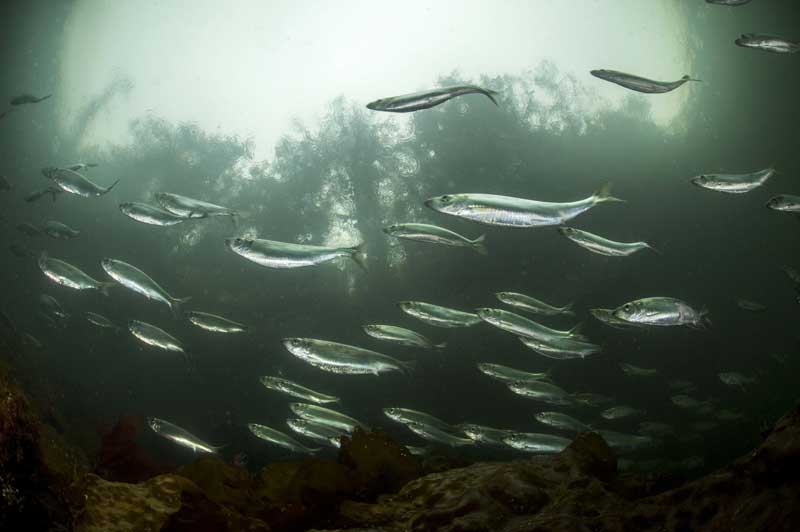
One of the most important stewardship issues for HIRMD has been supporting research and protection for Pacific Herring. “It’s a keystone species here,” explains Housty. “It has always been really important to us and we started to notice a dramatic decrease in the herring stocks over the last decade.”
Herring have sustained the coastal First Nations of British Columbia for thousands of years. It is a critical species for the socio-ecological systems of the central coast and the Heiltsuk have traditionally relied on herring for food, social, and economic purposes. Herring are also crucial for supporting the biodiversity of the Great Bear Rainforest – a significant decrease in herring stocks would drastically impact the ecology of the entire coastal region.
For these reasons, the recent decreases in herring stocks raised alarms for the Heiltsuk. HIRMD partnered with Simon Fraser University to conduct research incorporating Heiltsuk traditional knowledge to determine the extent of the drop in herring stocks.
We learned from research that the herring stocks aren’t nearly as healthy as they used to be and we need to be really careful going forward in terms of management.
“We learned from research that the herring stocks aren’t nearly as healthy as they used to be and we need to be really careful going forward in terms of management,” explains Housty. “We took it as our mandate that we needed to look after the herring stocks and to close the commercial fisheries that were slated to open the next year in our territory.”
In March 2015, the Heiltsuk issued a tribal ban throughout their marine territories that prohibited industrial herring fishing in order to help herring stocks recover. The Heiltsuk’s own commercial licenses were suspended to comply with the ban. Government regulating authorities did not initially follow suit, however, and moved ahead to open herring fisheries in Heiltsuk territory.
In an effort to protect a resource that was integral to their Nation’s well-being, Heiltsuk met with senior management with the Fisheries and Oceans Canada at their office, advocating that the government close commercial herring fisheries in the Nation’s territories and initiate resource management discussions with the Heiltsuk. “After all the protests, we had the regional manager agree that we needed to sit down together and create a joint management plan,” says Housty.

The result is a new joint management plan for herring management in the central coast and a victory for the Heiltsuk in their efforts to protect and recover herring stocks. For the 2016 season, the Heiltsuk developed a plan with Fisheries and Oceans Canada with a lowered harvest rate from 10% to 7% of available stocks and full closure of the herring sac roe fishery in Spiller Channel – one of the most important spawning grounds for the herring. The plan also specifies that a Heiltsuk observer be on all fishery boats during the herring harvest in acknowledgement of the Nation’s right to environmental stewardship. It also closed several areas to commercial harvest that are important for herring spawn-on-kelp (where herring lay eggs on seaweed) harvest sites in order to further the recovery of stock in specific marine systems.
We’ve been able to really change the face of how the herring are managed in our area.
“We’ve been able to really change the face of how the herring are managed in our area,” says Housty. “Rather than it turning into conflict every spring when the herring come, we’ve been able to sit down and look at the actual size of the stocks and what’s actually plausible in terms of the commercial fishery, food fishery, and the zero kill spawn-on-kelp fishery.”
Key Challenges and Successes
Planning for Staff Success
“Without dedicated and enthusiastic staff, stewardship programming will not reach its full potential,” explains Brown. With multi-year and multi-faceted projects, it’s important to develop and retain the staff that will be invested in the success of projects and have structures in place to hire and train new ones.
“We did a growth plan for HIRMD where we created position profiles with all of our staff. This helped us to understand all the detailed descriptions of each position, and gives us a chance to focus on succession planning so that if someone is promoted or leaves, a position doesn’t go vacant because there’s no one to fill it. We are prepared with another person to move into it. We also have a training plan for every staff members, so that we can build on the capacity that they already have.”
Environmental Outcomes
HIRMD has undertaken a wide range of research projects focusing on salmon, clams, crabs, shellfish, herring and kelp to ensure the conservation and sustainable management of these species. This includes research partnerships with Simon Fraser University and the Hakai Institute.
There is one full time staff dedicated to referrals that is consulted on parks, forestry, guide outfitters, aquaculture, private land development, oil and gas related marine transportation, and activities in the territory to ensure that these activities are consistent with Heiltsuk land, water, and cultural management plans.
Four conservation management plans have been completed with an additional 16 being developed by the Nation in discussions with BC Parks and the Ministry of Environment.
HIRMD has also negotiated a management plan with the Fisheries and Oceans Department to ensure herring stocks have an opportunity to recover from past unsustainable commercial activities in the Nation’s territories.
Learn more about management plans.
Cultural Outcomes
The cultural unit of HIRMD is supporting the recording of family histories on the land, digitizing archival audio recording for preservation and access, including recordings of Elders speaking Hailhzaqvla. Elders have been involved at Board and committee level with youth representatives learning from Elders through ongoing mentorship.
A traditional use study has been completed to create a “map biography” of the Nation from interviews. Research from Heiltsuk interviews has been incorporated into HIRMD decision making.
Heiltsuk Traditional Use Studies (HTUS) were developed to identify harvesting and other types of cultural sites that are important to Heiltsuk well-being, including a clam garden study.
Learn more about traditional language.
Social Outcomes
HIRMD employees have received training in 12 technical disciplines including data management, first aid, forestry, environmental stewardship, vessel operation, GIS and more. Of the 23 jobs that HIRMD supports, 90% are held by First Nation members.
The department holds meaningful consultations with the community to ensure that youth, Elders, and others living in Bella Bella are engaged and informed on conservation and stewardship work throughout the territory. Working with the Hemas (hereditary leaders), HIRMD ensures that hereditary guidance on HIRMD’s activities is always a key facet of the organization and its annual work plans.
Learn more about training.
Economic Outcomes
HIRMD employs 23 people in the remote community of Bella Bella, supporting the local economy of Bella Bella.
The stewardship department has also signed agreements with industry partners working in their territory to ensure effective referrals process and environmental stewardship of their resources. This enables the Nation to more effectively partner with industry and plan for economic development opportunities in their territory.
Learn more about partnerships.
Between 2009 – 2015, Coast Conservation Endowment Fund Foundation approved eleven separate projects totalling $5,242,870 towards this program.
Partnerships
- Qqs Projects Society and Koeye Camp
- Coast Forest Conservation Initiative
- Coastal First Nations (Great Bear Initiative Society)
- Hakai Institute
- National Centre for First Nations Governance
- Forest Stewardship Council
- First Nations Fisheries Council
- Raincoast Conservation Society
- Aboriginal Tourism Association of BC
- Department of Fisheries and Oceans
- Simon Fraser University
- InterFor
- Western Forest Products
- Vancouver Island University
- University of British Columbia
- University of Victoria
- First Nations Technology Council
- Ministry of Environment
- Kitasoo Band Council
- Wuikinuxv Nation
- Nuxalk Nation
Online Resources
- Heiltsuk Integrated Resource Management Department Blog.
HIRMD - Heiltsuk Herring Fisheries Resumes with Hope for Peace.
National Observer, March 2016. - Interfor and Heiltsuk Sign MOU to Strengthen Relationship.
Market Wired, April 2014. - Heiltsuk Nation overview by Coastal First Nations.
Coastal Guardian Watchmen Network - Opening the Eyes of First Nations Youth.
The Globe and Mail, March 2016. - Everything revolves around the herring: The Heiltsuk–herring relationship through time
Ecology and Society 22(2):10
Published On July 2, 2016 | Edited On April 1, 2025
